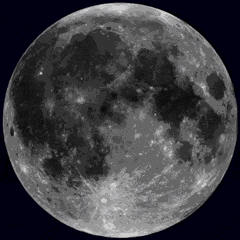<p >The Japanese Air Self-Defence Force has been confirmed to have begun operating F-35A fifth generation stealth fighters from Komatsu Air Base, marking the first time that the aircraft have been operationalised to directly phase out older <a href="https://militarywatchmagazine.com/article/japan-commencing-with-major-next-generation-upgrades-to-f-15j-samurai-fighter" >F-15J Eagle</a> fourth generation fighters in the country. Deployment of the first F-35s to the facility on April 1 marked the first major change to its frontline aircraft in 38 years, after F-15s were first introduced in the early 1980s. The strategic location&nbsp; in Ishikawa Prefecture, Central Japan, is vital for air defence duties over much of the country, with the facility having accordingly been prioritised to receive F-35s after Misawa Air Base in Aomori Prefecture. Speaking regarding the transition to the F-35A, Base Commander Hiroaki Murakami emphasised the importance of personnel readiness, stating: “Even with excellent aircraft, it is the people who operate and maintain them that matter… We intend to continue building a stronger, more resilient unit.” Komatsu Air Base has temporarily hosted F-35s in the past, and from August 4, 2023, <a href="https://militarywatchmagazine.com/article/italy-first-stealth-fighters-japan-euro-f35s" >hosted</a> Italian Air Force F-35As to participate in exercises with Japanese air units including&nbsp;F-15Js. The Japanese Ministry of Defence plans to permanently station 40 F-35As at Komatsu Air Base, with seven of the fighters scheduled to be deployed at the facility by the end of 2025.&nbsp;</p><p ><img src="https://militarywatchmagazine.com/m/articles/2025/04/08/article_67f54eda43c2a5_96953323.JPG" title="Japanese Air Self Defence Force F-35A Fighter and Personnel"></p><p >With over 200 F-15Js currently in service, the Eagles were previously the undisputed top air superiority fighters in East Asia when first procured over four decades ago, but have since seen their capabilities very comfortably overtaken by Chinese fighters such as the J-10C, J-16 and J-20 which all have post-fourth generation technologies. The Japanese F-15s are now considered almost totally obsolete if confronting cutting edge Chinese ‘4+ generation’ and fifth generation fighter units. The U.S. Air Force and the Japan Air Self Defence Force have <a href="https://militarywatchmagazine.com/article/us-withdrawing-f15-44yrs-china-doorstep" target="_blank">struggled to replace</a> their F-15 fleets, due primarily to <a href="https://militarywatchmagazine.com/article/25-f22-maiden-flight-looks-like-failure" target="_blank">wide ranging issues </a>with the aircraft’s direct successor the F-22 which resulted in the cancellation of over 75 percent of the planned production run, and left the former service with a small fleet that has consistently had by far the lowest availability rates as well as various performance shortcomings. Without a direct successor to the F-15, Japan was left with the F-35 as the only NATO-compatible stealth fighter it could procure, with the aircraft today seen as the only one capable of going head to head with advanced Chinese fighters&nbsp;<a href="https://militarywatchmagazine.com/article/new-phase-single-crystal-blade-ws15" target="_blank">such as the J-20</a> without suffering a major disadvantage.&nbsp;</p><p ><img src="https://militarywatchmagazine.com/m/articles/2025/04/08/article_67f54f1506fc74_75803715.png" title="Japanese Air Self Defence Force F-15 Fighters"></p><p >Despite its technological sophistication, in particular its sensor fusion and stealth capabilities, the F-35 is far from well optimised for air-to-air combat or air defence duties. Its limited flight performance, low weapons carrying capacity, relatively short range, and inability to carry missiles capable of high off boresight targeting while configured for stealth are all significant shortcomings. Japan placed its first order for 42 F-35s in 2011, months after the <a href="https://militarywatchmagazine.com/article/chinas-j-20-a-decade-on-the-west-s-least-favourite-stealth-fighter-marks-10-years-since-first-flight" target="_blank">J-20 made its first flight</a>, and placed a followup order for 105 more fighters in 2017 months after the J-20 officially entered service in the Chinese People’s Liberation Army Air Force. The advanced aerial warfare capabilities in China’s fleet have been a major factor stimulating the United States and many of its allies to <a href="https://militarywatchmagazine.com/article/expands-f35c-japan-iwakuni" target="_blank">concentrate F-35 deployments </a>in Japan, with the East Asian country being the only one in the world to host permanent foreign deployments of F-35s from all three American services that operate them, including Air Force F-35As, Marine F-35Bs and Navy F-35Cs.&nbsp;European states such as Italy and the Netherlands have also <a href="https://militarywatchmagazine.com/article/italy-f35-japan-experience-carrier" target="_blank">prioritised</a> deploying F-35s to the country.</p>
